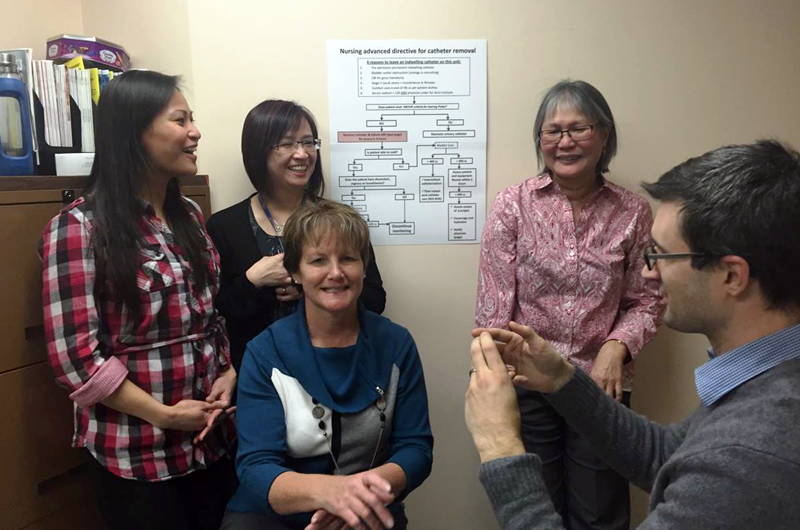Sunnybrook Health Sciences Centre: Early Removal of Unnecessary Urinary Catheters
May 9, 2018 - Profiles
Dr. Jerome Leis led the project on appropriate reasons for urinary catheter use at Sunnybrook Health Sciences.
Sunnybrook Health Sciences Centre: Early Removal of Unnecessary Urinary Catheters
May 9, 2018 - Profiles
Dr. Jerome Leis led the project on appropriate reasons for urinary catheter use at Sunnybrook Health Sciences.

In April 2014, a point prevalence audit confirmed that 18% of hospitalized patients were catheterized even though 69% lacked an appropriate guideline-based reason. Urinary catheter use was being left to individual clinicians and there was no established standard practice.
The hospital’s post-surgical Urinary Tract Infection rate was among the highest (10th decile) as compared to hospitals participating in the National Surgical Quality Improvement Program (NSQIP). Then in 2014-2015, changes were made including the development of consensus criteria for inserting a urinary catheter in the operating room and emergency Department, and promoting early removal on both medical and surgical wards. One intervention included a medical directive to empower nurses to remove urinary catheters on the ward based on pre-specified criteria agreed upon by all physicians, surgeons and advance practice nurses at the hospital. The standardized practice for catheter use has been fully implemented in the operating room, recovery room and both surgical and medical wards resulting in 50% fewer catheter days. Three years later, Sunnybrook’s post-surgical Urinary Tract Infection rate is now among the lowest in North America (1st decile). Dr. Jerome Leis, who led the project, credits its success to engagement of nurses. “Nurses play a key role in urinary catheter re-assessment and removal. We could not have achieved these results without tremendous leadership from the nurses at Sunnybrook,” says Dr. Leis.
A toolkit on implementation of programs to promote appropriate use of urinary catheters in hospitals has been developed by Dr. Leis and Dr. Christine Soong. You can find the toolkit and its modules here.
